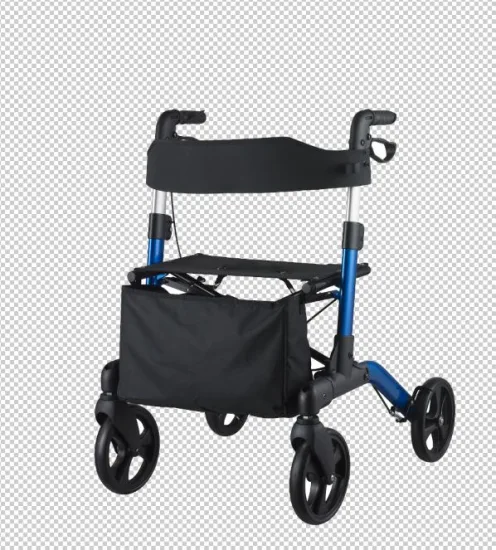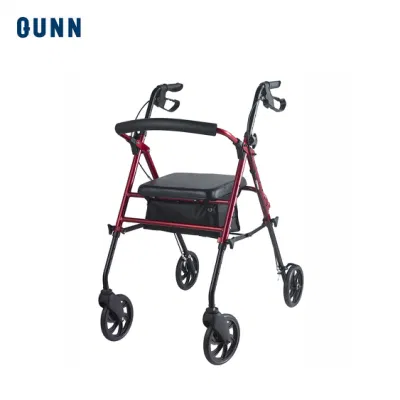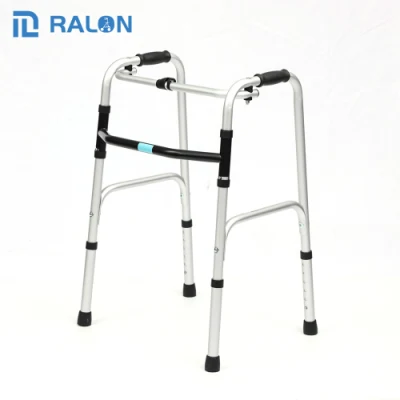A Comprehensive Guide to Mobility Devices
Claire Szewczyk Updated: June 6, 2023
Mobility aids are special tools that assist individuals who face difficulties with their movement, allowing them to experience greater freedom and independence.
These aids are commonly chosen by individuals with disabilities, injuries, or older adults who have a higher chance of falling.
By using mobility aids, people can enjoy numerous advantages.
First, they gain a sense of independence, as these devices enable them to move around with greater ease.
Second, mobility aids help reduce pain, making it more comfortable for individuals to go about their daily activities.
Third, these aids contribute to increased confidence and self-esteem, as users feel more secure and capable in their ability to move around.
A wide variety of mobility devices are available to cater to different needs.
These devices range from canes and crutches, which provide additional support while walking, to wheelchairs and stair lifts, which assist with mobility over longer distances or when facing stairs.
Different types of mobility aids are available to meet specific needs based on mobility issues or injuries. Here are some commonly used mobility aids:
Canes are beneficial for individuals who may be at risk of falling. They function similarly to crutches by supporting the body’s weight and transferring the load from the legs to the upper body. However, canes provide less support to the lower body compared to crutches and place more pressure on the hands and wrists.
There are different types of canes that serve specific purposes:
Some canes are adjustable or foldable for convenience.
Canes used for non-medical purposes, such as by hikers, are commonly referred to as walking sticks.
It is estimated that in the United States, about 1 in every 10 adults over the age of 65 uses a cane.
Crutches are mobility aids that assist in shifting weight from the legs to the upper body.
They can be used individually or in pairs and are helpful for maintaining an upright posture.
Crutches are suitable for both temporary injuries and permanent disabilities.
Various types of crutches are available, each serving specific purposes:
Walkers, also known as Zimmer frames, are essential mobility aids consisting of a sturdy metal framework with four legs that offer stability and support to the user.
These walkers are widely used, with 4.6 percent of adults over 65 in the United States relying on them.
The basic walker design features a three-sided frame that surrounds the user.
To move forward, individuals lift the frame and place it a bit further ahead, then take steps to meet it, repeating the process.
Some walkers are equipped with wheels or glides on the legs’ base, enabling users to slide the walker instead of lifting it.
This feature is particularly helpful for individuals with limited arm strength.
Beyond the basic model, there are different types of walkers available:
Wheelchairs are essential mobility aids utilized by individuals who cannot bear weight on their lower limbs or are unable to walk.
They are particularly beneficial for those with severe disabilities or when traveling longer distances is necessary.
Wheelchairs come in different forms:
In a remarkable advancement, a wheelchair controlled by neural impulses was developed in 2016, enabling users to propel the wheelchair using their brain signals.
Specialized types of wheelchairs have been designed to cater to specific needs:
Wheelchairs play a crucial role in enhancing mobility and independence for individuals with mobility limitations.
Mobility scooters are mobility devices that resemble wheelchairs but are equipped with a seat placed on top of either three, four, or five wheels.
These scooters are controlled using handlebars or steering wheels to determine the direction of movement. They are typically powered by rechargeable batteries.
One advantage of mobility scooters is that they provide a seating option and foot plates for users, eliminating the need for upper body strength or flexibility required by manual wheelchairs.
Many individuals who use mobility scooters express positive impacts on their lives resulting from their choice of this mobility aid.
It’s important to note that the rules for using mobility scooters on sidewalks and roads can vary depending on the location. In most cases, training programs are available for individuals who are using a mobility scooter for the first time, ensuring safe and proper usage of the device.
Guide dogs are highly trained service animals that offer invaluable assistance to individuals who are blind or visually impaired.
These remarkable companions are specifically trained to help their owners navigate through obstacles and safely maneuver in their surroundings.
Having a guide dog or therapy animal not only provides practical assistance but also brings forth positive effects on a psychological, physiological, and social level.
These incredible animals offer companionship, emotional support, and a sense of security to their owners, contributing to improved overall well-being.
In the United States and many other countries, it is legally mandated that service animals, including guide dogs, are granted access to any public business or agency where the general public is allowed.
Exceptions are only made when there are genuine health or safety concerns.
This ensures that individuals with service animals can fully participate in public life, accessing the same spaces and services as everyone else.
Safety modifications can greatly improve accessibility and mobility within homes or offices, particularly in areas where there are changes in surface heights.
Here are some important modifications to consider:
By implementing these safety modifications, individuals with mobility challenges can experience increased independence and accessibility, ensuring they can navigate buildings and spaces with greater ease and confidence.
A wide range of individuals can benefit from using mobility aids, whether they have a temporary or long-term mobility issue.
The specific type of mobility aid needed will vary depending on each person’s unique needs and circumstances.
Mobility aids can be beneficial for people with various conditions, including:
Furthermore, older adults, individuals who have undergone amputations, and those recovering from surgery can also benefit greatly from using mobility aids to enhance their mobility, independence, and overall quality of life.
While mobility aids offer numerous benefits, it’s important to be aware of the potential risks and associated injuries that can occur during their use.
For instance, using underarm crutches for an extended period may result in a condition called crutch paralysis.
This happens when excessive pressure is exerted on the nerves in the armpit, causing discomfort and potential nerve damage.
Improper or excessive use of mobility aids can also contribute to other types of injuries.
Research indicates that a significant number of users are not adequately trained in the proper use of their mobility aid.
Shockingly, only one-third of users receive their mobility aid from a medical professional, and a mere 20 percent receive proper training.
To ensure safe and effective use of a new mobility aid, it is crucial for individuals to schedule an appointment with a doctor or physical therapist.
These healthcare professionals can provide essential guidance and training on how to correctly use the device, reducing the risk of injuries and maximizing the benefits gained from the mobility aid.
How useful was this post?
Click on a star to rate it!
As you found this post useful...
Share with others on social media!
We are sorry that this post was not as useful for you!
Help us improve this post!
Tell us how we can improve this post?
The importance of VA disability benefits for veterans cannot be overstated. These benefits provide crucial financial and medical support to veterans who have experienced service-related disabilities. However, the process of…
As a veteran, you may be familiar with the process of applying for VA disability benefits. After filing a claim, you may have to wait several months, or even years,…
In a previous post, I talked about the ways in which veterans could be exposed to Lead Paint. However, lead-based paint is not the only route of exposure. Veterans are…
White canesQuad canesForearm canesAxillary (underarm) crutchesLofstrand (forearm) crutches Platform crutchesRollatorsKnee walkersWalker-cane hybridsManual wheelchairsAttendant-propelled wheelchairsElectric-powered wheelchairsStanding wheelchairsSports wheelchairsRampsStair liftsHandrailsArthritisCerebral palsyDevelopmental disabilitiesDiabetic ulcers and woundsBalance difficultiesFractures or broken bones in the lower limbsGoutHeart or lung issuesInjury to the legs, feet, or backObesity Spina bifidaSprains and strainsWalking impairment due to brain injury or strokeVisual impairment or blindness
You may also like
![Outdoor High Quality Adjustable New Design Double Folding Rollator]()
Outdoor High Quality Adjustable New Design Double Folding Rollator
Overview Outdoor High Quality Adjustable for The Elderly New Design Double Folding RollatorProduct Description Specification: New patented rollator for you . One button folding and closing in 3
![Aids Walking Classcial Alum. Adult Rollator]()
Aids Walking Classcial Alum. Adult Rollator
Overview Product Description Aids Walking Classcial Alum. Adult Rollator. Zhongshan Qunn Medical Equipment Co., Ltd. is a new modern professional manufacturer produces various kinds of walking
![Aluminum Medical Walker for Disabled Patient Rollator Walker Folding]()
Aluminum Medical Walker for Disabled Patient Rollator Walker Folding
Overview Product Description 1) Production Description ○Alumium foldable walker ○Single H frame and single button ○Adjustable height ○Fixed without Cbolt ○ Easy to use and push button 2) Specification
![6PCS/Set Elbow Knee Pads Helmet Wristguard Skateboard Roller Skating Protective Gear]()
6PCS/Set Elbow Knee Pads Helmet Wristguard Skateboard Roller Skating Protective Gear
01. Product Description 02. Company Profile Qingdao Brother Rubber company was established in 1996 year, Located in Qingdao,China. We are an OEM/ODM professional manufacturer focused on solutions of





